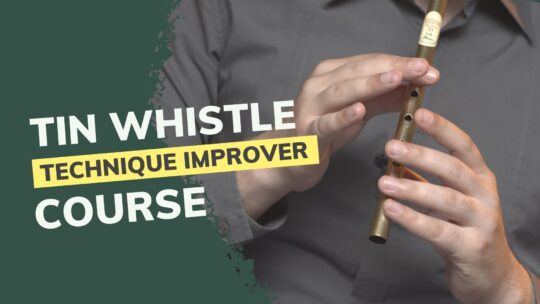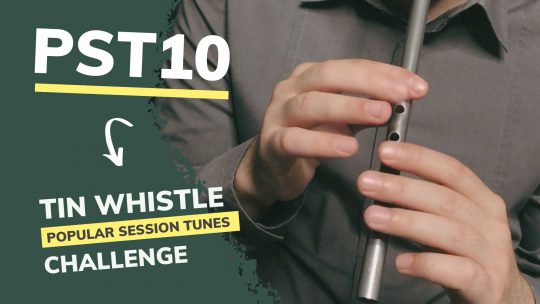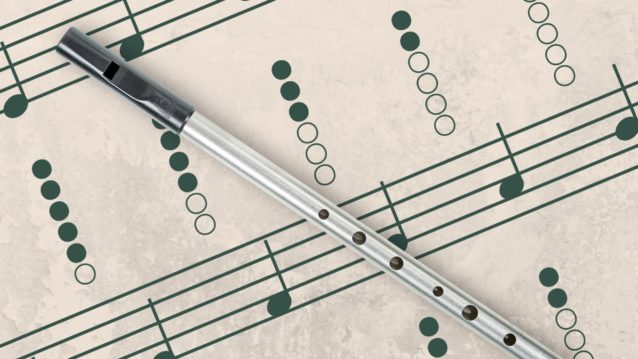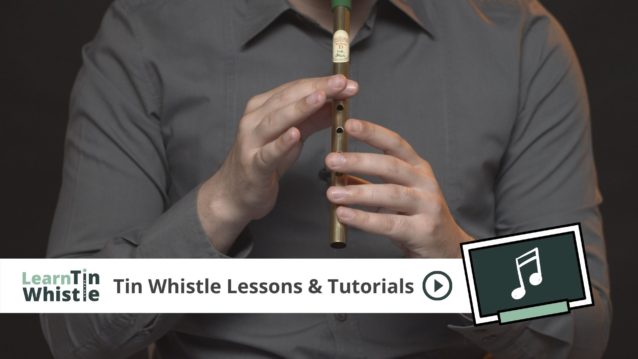Using vibrato on a tin whistle is probably not the favorite technique among Irish traditional musicians. It originally comes from classical music, but it’s worth giving it a mention as tin whistle players generally use it, especially in slower tunes. At least in terms that it might help to practice the air articulation, which is a good foundation and in favor of fingering ornaments that you will use more frequently.
What is vibrato and when to use it on a tin whistle?
Technically speaking, vibrato is a technique of adding tonal vibration to notes by making slight pitch variations. Also, in terms of rhythm, these variations need to be evenly spaced to make vibrato sound correctly. You will hear it more often in slow airs or ballads than in fast-tempo tunes. It adds emotion to a melody and is somewhat natural to use it on long notes, especially on phrase endings.
How to do tin whistle vibrato?
There are two common ways of doing vibrato on a tin whistle:
- Using the fingers
- Using the diaphragm (breathing)
For the first solution, you “shake” the finger two notes below the original note. It means that if you are playing a G note, for example, you leave one empty hole (F#) below and rhythmically move the finger above the E hole. If you are playing A note, you want to shake the finger above the F# hole, and so on. Also, keep in mind that “the rule of two notes below” is not strict. It depends on the whistle itself as well as its specific note. Sometimes it may sound better if you do it with three notes below instead of two. Alternatively, you can always shake the finger one note below, but then you want to cover the hole only partially.
The second technique is by using your diaphragm. It’s harder to achieve and needs more practice, but it can sound more natural, and you can use it on any note. There are no limitations. So, diaphragm vibrato means that you alternately lower and increase the air pressure (speed) while playing a note. To do it properly, you should never stop the airflow, and you articulate those vibrations to align with the song’s pulse. You can play faster or slower vibrato, which means that speedier vibrato usually has twice as many fluctuations in the same duration.
You may notice that traditional players prefer finger vibrato. That’s probably because cheaper entry-level whistles are less likely to be capable of accepting the airflow variations and diaphragm vibrato cannot be played at all.
Pitch variations need to be evenly spaced to create a correct sounding vibrato.
LearnTinWhistle.com
Practicing vibrato on a tin whistle
Every specific whistle requires a different amount of air, so we definitely suggest trying both methods to find out what sounds better for your particular whistle. Cheaper whistles usually have a very low threshold when it comes to tonal pitch variation thus sometimes it’s not even possible to do the diaphragm method without getting squeaks.
For the diaphragm method, you can practice vibrato even without the instrument. The technique is very similar to singing vibrato. Therefore, you can just sing vowels and try to articulate the air correctly. It’s a great exercise. Of course, doing this on a whistle is necessary later on to figure out the back-pressure of your whistle. You can play the scales or whatever you think is natural. Vibrato usually takes a lot of air, especially in upper octave notes, so try to practice it on a single note for a couple of seconds, then take a deep breath and start with the next one.
Examples of using vibrato in tunes
In the video below, you can see a demonstration of using vibrato in the Amazing Grace and Hector The Hero.
And here’s the sheet music and tabs for the previous video examples. The notes on which we play vibrato are marked with the letter “V”.

There’s one interesting spot in the Amazing Grace’s video. You may notice that we shake the top finger when playing the high D note, but the vibrato is not produced. That’s because some whistles are somewhat capable of doing so, but others aren’t. And that’s why the high D note is not marked with the vibrato in the sheet music example. But, of course, you can try it and see what happens depending on the whistle you play.

A good example of playing a tin whistle vibrato
Just to get a quick sense of how vibrato is accomplished on a whistle, watch and listen to the Lonesome Boatman tune below, performed by a legendary player – Finbar Furey. Pay attention, especially to the intro. In this video, he is using a Low G whistle, but the principle is the same for a tin whistle, a low whistle, or an Irish flute. You can notice that he combines both diaphragm and fingering techniques, which is really interesting.




